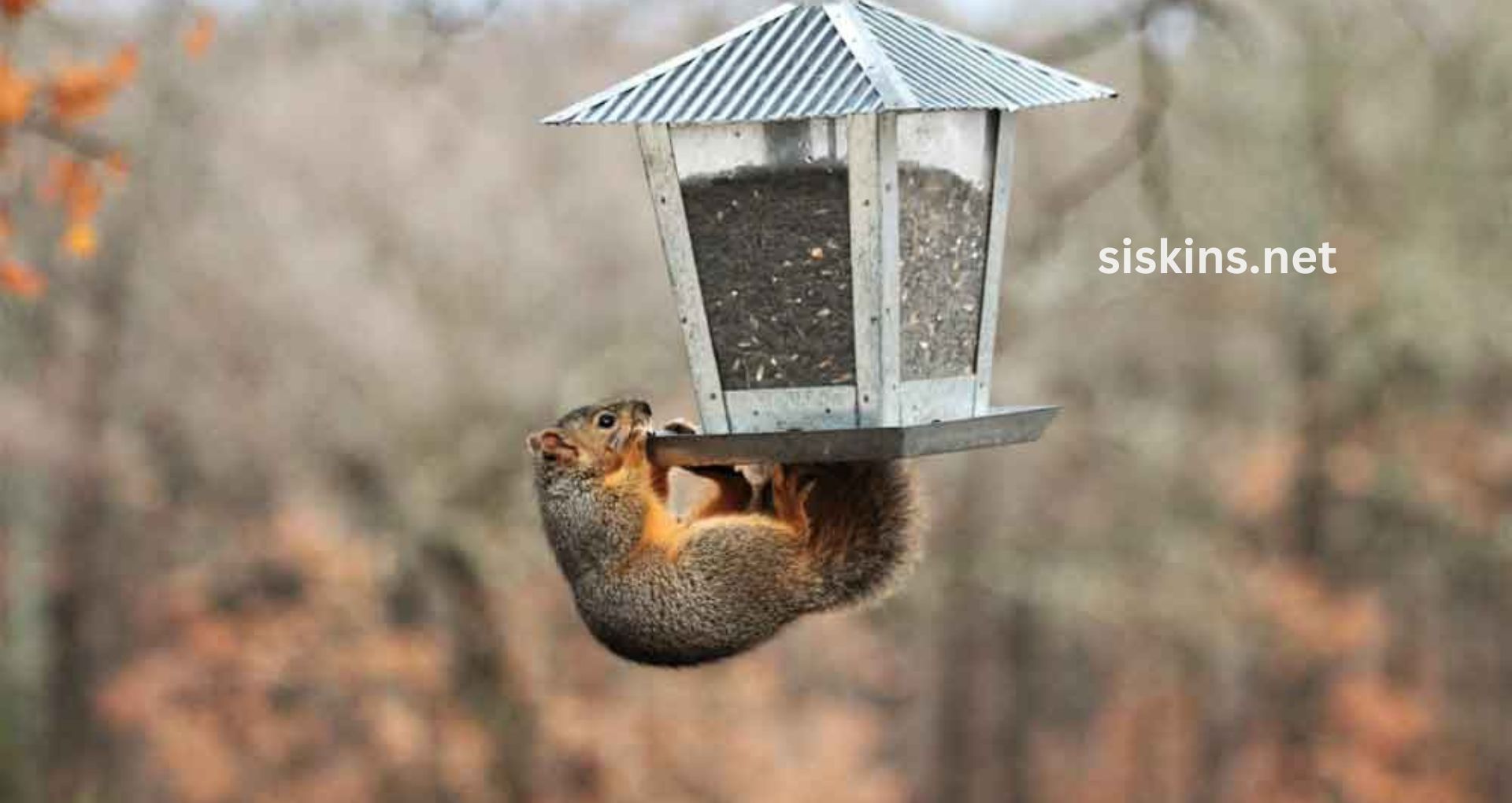Watching birds from home is such a delightful experience, but squirrels can be a real challenge when it comes to bird feeders. While they can be fun to observe, they often hog all the birdseed, leaving little for our feathered friends. So, how can you make a squirrel-proof bird feeder that keeps these little guys away without hurting them? Let’s dive into some easy DIY tips, designs, and strategies to protect your bird feeders effectively.
Why Squirrels Love Bird Feeders

Squirrels are attracted to bird feeders because they offer a buffet of nutritious seeds and nuts. These foods are packed with calories, fats, and proteins—just what squirrels need! With their amazing climbing skills, squirrels often see bird feeders as their personal snack bars unless you put some barriers in place.
Challenges of Keeping Squirrels Away
Squirrels are agile and clever, and they know how to get around obstacles. They can jump up to 10 feet and climb nearly anything. Understanding their behavior can help us design bird feeders that keep them at bay.

Squirrel Buster Plus Squirrel
Squirrel Buster Plus Bird Feeder offers squirrel-proof design, ample seed capacity, and adjustable perch settings, ensuring a safe and uninterrupted bird feeding experience.
Choosing the Best Spot for Squirrel-Proof Bird Feeders
- Optimal Heights and Distances: Place your bird feeder about 10 feet away from trees, fences, or buildings. This distance helps prevent squirrels from jumping onto the feeder. Also, make sure the feeder is at least 5 feet off the ground to make it harder for squirrels to leap up from below.
- Using Natural Barriers: Position your bird feeders near thin branches or isolated poles. This makes it tougher for squirrels to find stable launching spots. A single pole with a smooth surface, like PVC pipe, can also help keep squirrels from climbing up.
DIY Squirrel-Proof Bird Feeder Designs

- Homemade Solutions: Building your own squirrel-proof bird feeder can be a fun and cost-effective way to protect your birdseed. You can use everyday items like wire mesh, slinky springs, or PVC piping to deter squirrels.
- Creating a Squirrel Baffle: A baffle is an obstacle that squirrels need to navigate. You can use a cone-shaped or saucer-like baffle above or below the feeder to keep them from reaching the seed. For instance, hanging a simple dome made of plastic above the feeder makes it tough for squirrels to get past it.
Using Commercially Available Squirrel Baffles
- How Baffles Work: Baffles act as barriers to stop squirrels from accessing the feeder from above or below. They come in various shapes, like domes or cones, designed to make it hard for squirrels to cling or climb.
- Installing Baffles: Depending on your feeder type, you can place a baffle either above or below it. Hanging feeders benefit from an overhead baffle, while pole-mounted feeders need one attached midway up the pole.

Squirrel Repellent Outdoor
Effective outdoor squirrel repellent protects gardens and bird feeders, using natural ingredients to deter squirrels without harming them or the environment.
Choosing the Right Feeder Design
- Tube Feeders and Weight-Activated Feeders: Tube feeders with small perches are tricky for squirrels to use. Weight-activated feeders close the seed access when something heavier, like a squirrel, lands on the perch. These feeders are great for keeping squirrels away.
- Dome Feeders with Adjustable Shields: Dome feeders with adjustable shields let you control how low the dome hangs. Keeping it close to the feeder allows only small birds to access the seeds, keeping larger animals away.
Homemade Repellents and Deterrents

- Capsaicin as a Natural Squirrel Repellent: Birds aren’t affected by capsaicin (the spicy part of peppers), but it does keep squirrels away. You can mix a bit of cayenne pepper with the birdseed, but make sure to use it in moderation to avoid irritation when handling.
- Safe Squirrel Repellent Sprays: There are non-toxic sprays made to discourage squirrels from your bird feeder. Just ensure you use bird-safe repellents designed for this purpose so you don’t harm the birds.
DIY Squirrel-Proof Bird Feeder Tips and Tricks
- Using Durable Materials: When making or modifying your feeder, choose materials like metal or plexiglass that squirrels can’t easily chew through. Strong materials will help keep them out.
- Keeping the Ground Clean: To avoid attracting squirrels, regularly clean up any fallen seeds. A catch tray can help reduce spillage and make the area less appealing to ground-foraging animals.
Innovative Feeder Placement and Maintenance
- Rotating Feeders: Try moving your feeders to different locations every few weeks. This keeps squirrels from getting used to one spot and makes it harder for them to figure out a routine.
- Securing Feeders: Make sure your feeders are tightly fastened to poles or branches. A loose feeder is easy for squirrels to knock down.

Gtongoko Smart Bird Feeder Pole Squirrel Proof 79 Inch Bird House Pole for Outdoors
Gtongoko Smart Bird Feeder Pole, 79-inch squirrel-proof design, sturdy outdoor birdhouse pole for securely attracting and feeding birds in your garden.
Also Read: How can I create natural bird shelters in my garden?
Advanced Solutions for Persistent Squirrels
- Weight-Activated Feeders: These feeders are among the best for deterring squirrels. They support lightweight birds but close automatically if a heavier animal, like a squirrel, tries to get in.
- Motorized Baffles: Some advanced feeders have motorized features that spin the feeder when a squirrel climbs on, gently sending them away without causing any harm.
By using these tips and tricks, you can enjoy birdwatching while keeping those pesky squirrels at bay!

